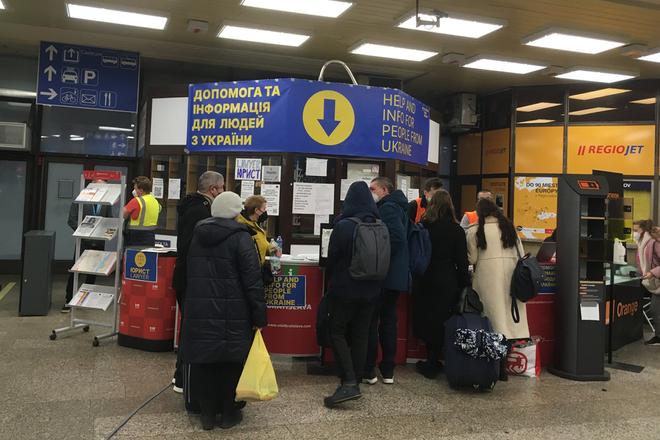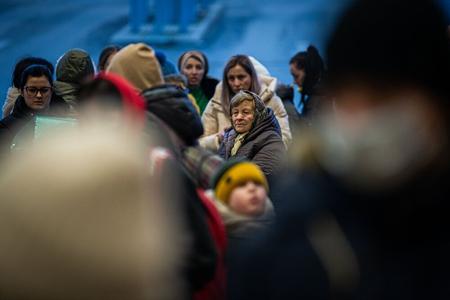From the moment Vladimir Putin’s troops invaded Ukraine on February 24, organisations that provide humanitarian assistance in Slovakia, Ukraine’s direct neighbour, have been in crisis mode.
Collection points for food, clothing and medical supplies for refugees have been inundated with donations across the country while more and more NGOs are setting up tents by the Slovak-Ukrainian border to help those who cross into Slovakia on foot or by car.
Since the outbreak of the war, some 2 million people are estimated to have fled Ukraine, while around 165,000 have come to Slovakia as of the morning of March 10. Some are staying in Slovakia, with relatives and friends or relying on help from the state, NGOs and volunteers, although most are estimated to continue further west.
At Bratislava’s main train station, Hlavná Stanica, people travelling from Ukraine by train the first few days after the invasion were stranded. There was no one there to provide them with information on the city, accommodation or transport. As soon as she realised this, Human Rights League Director Zuzana Števulová sprung into action.
She called the office of Bratislava Mayor Matúš Vallo the following Monday to ask for its help in establishing an information point for refugees arriving by train.
Eleven days after the initial call, the Hlavná Stanica information point is fully functional and manned by dozens of volunteers and coordinators clad in orange vests and bilingual name tags.
Števulová, who provides free legal assistance at the info point, says it’s a miracle that it came together so quickly.
“We came here the other day with just two small tables because we couldn’t imagine how much help would be needed, but straight away, we worked past midnight and we realised it was important to work here together.”



